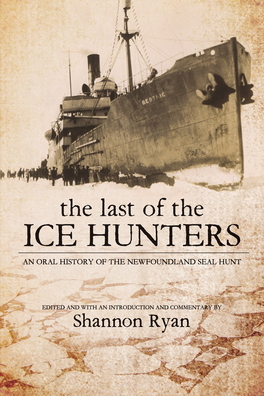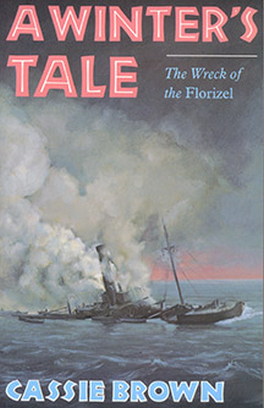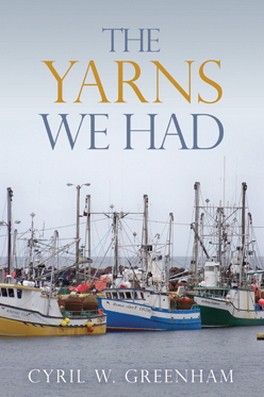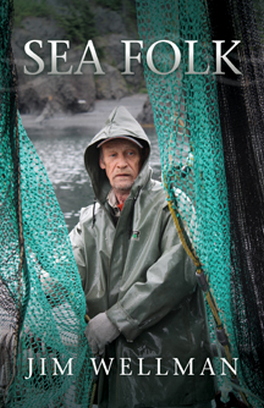The Last of the Ice Hunters is a history of the seal hunt, an industry now in decline, but one which provided the few opportunities for employment to Newfoundlanders and Labradorians during the 1930s. Written in the words of the sealers themselves, the book is a compilation of interviews conducted by students who trained under Professor Shannon Ryan of Memorial University of Newfoundland. This study of the seal hunt begins with a chapter on the introduction, background, and overall development of the seal hunt up to 1950. The majority of the interviews describe sealing practices and traditions as they existed during the Great Depression through to the Commission of Government period (1934–1949). The interviews show the lives of the men, young and old, who worked hard, under harsh conditions, to provide for their families. This book also recognizes and commemorates the end of Newfoundland’s traditional seal hunt. The Last of the Ice Hunters is intended to provide a resource for others to use in their pursuits of information on sealers, their dependants, and the social and economic circumstances of the first half of the twentieth century.
Harold Abbott, b.1913, Int.1986
We used to wear to the ice what they call moleskin [hard-wearing cotton fabric] pants. Now, one thing you—more or less—was you had to have and that was a pair of skin boots. If you didn’t have a pair of skin boots, you was considered not fitted for to go to the ice, in those days. But now, the people now [1980s], as long as they got on a pair of logans or a pair of rubber boots.
But anyway, I got my first pair of skin boots. I bought them in St. John’s.I don’t remember just how much I paid for them. They were considered light for going over the ice, and they’d have leather taps on them and heels and you’d have what the old fellows used to call sparables and chisels. [The latter were larger and used for the heels while the former were smaller and used in the soles.] You’d have them in your boots so as to protect you from slipping on the ice.
Then you’d have, in my day you didn’t have any parkas because there was no parkas as is now in these days. But a lot of people used to have what they call a white canvas jacket. I remember I had a white canvas jacket with a sort of a hood on it that my sister made. Well then, to go out on the ice with a white canvas jacket, it didn’t look too good. The first thing you would do when you killed the first seal was you’d get the blood and you’d put it all over your jacket to smear it up with the blood of the flippers. I remember an old fellow from Bonavista, Fred Phillips. When he’d pelt the first seal, he was so much overjoyed that—I can see him now—he took the seal and he threw it up, the pelt, as far as he could in the air and then rubbed the blood in his jacket. That’s how it was when I was at the ice.
To get from here to St. John’s, you’d get on the train in Bonavista. You’d go in the cars with just those wooden seats. It took you six hours to get from Bonavista to Clarenville. Then if you were lucky, you’d connect with the train going in to St. John’s. While you were in Clarenville, you had to stay in the station or in your [train] car—with 30 or 40, because there would be at least 30 or 40 going from Bonavista, and some people would take advantage and go up on the sealer’s train. It was cheaper to travel on the sealer’s train. There’d be a nice crowd in Clarenville. Some would be staying in the old waiting station there. You’d go down to the boiler house to boil your kettle—most of the fellows would have a small kettle among three or four men. You’d go down there and you’d boil the water and come up and steep your tea. You’d get a mug of tea and you’d have a lunch with you to take along.
Now, then, when the train would come through, you’d connect, and you’d get on the train going in St. John’s. You’d get into St. John’s maybe 9 or 10 o’clock, around there, the next day. So it’s approximately a 24-hour journey from Bonavista to St. John’s to go to the ice. Now, there were fellows coming up from the north side of Bonavista Bay from Greenspond and those places. They’d come up and connect and they’d had to have maybe two or three days’ walking, as far as I understand. They’d come up and come in and connect with the train in Gambo. We’d get in and then there’d be a rush to go down and get your berth in the boat that you were going in. You’d be in your boat then for, maybe, two or three days—three or four days, perhaps, before you’d sail, getting ready to go to the ice.
You’d have three or four pairs of socks and that sort of thing and you’d always have a spare pair of mitts that your mother or your sister would knit to put in your sack that you carried on the ice, because you never knew when you’d be caught out and be out all night. I always had a spare pair of mitts, woollen mitts, and a pair of socks in my knapsack [nunny bag] on the ice, and you’d have your compass in your bag in case it came stormy, rough weather, so as you’d take off [a compass course] where the other men were and where your steamer was and that sort of thing.
You’d take along a cake with you, a special cake, and you wouldn’t cut that cake until you struck the seals. You’d have a cake that your mother made for you. Then, when you got into the seals, some of the fellows anyway, or most of the fellows, would cut the cake, and you’d share it out among your buddies around where you bunked. Now, where I bunked in the Ungava was down in the hold. There was 150 men in the old hold with bunks all around the sides. Three men in a bunk—around 150 men down in the one place.
I had a bunk filled with shavings; it wasn’t a real mattress. It was sort of a bunk bed made out of brin or burlap—whatever you want to call it—and shavings in it. You’d make the best you could out of that. [Men collected shavings from the cooperages and carpenter shops to put in the brin bags for mattresses.]
Before you left St. John’s, you’d go and you’d get a tin pan and a fork and knife or perhaps you’d buy that, get that out of your crop. You’d take along that and you’d keep that down in your bunk. When the time came that you had to go up and get your meal, somebody would sing out dinnertime, or whatever it was, and you’d take along your pan and your fork and your knife.
You’d go up, and the cook, or so many cooks, would put your meal, whatever it might be—salt beef, duff and pudding sometimes, and that sort of thing, potatoes and turnips—and you’d put it in your pan. You’d eat what you wanted. Then you’d come out with your pan and on the side of the steamer there was a tap. You’d let the water run in your pan and you’d stir it around with your fork and you’d tip it over and let it fall out. That was how you’d clean out your pan. You carried it up and put it in your bunk again until the next meal.
An indispensable resource for those who want to listen to the authentic and resonating voices of the sealers themselves.-- The Compass --























